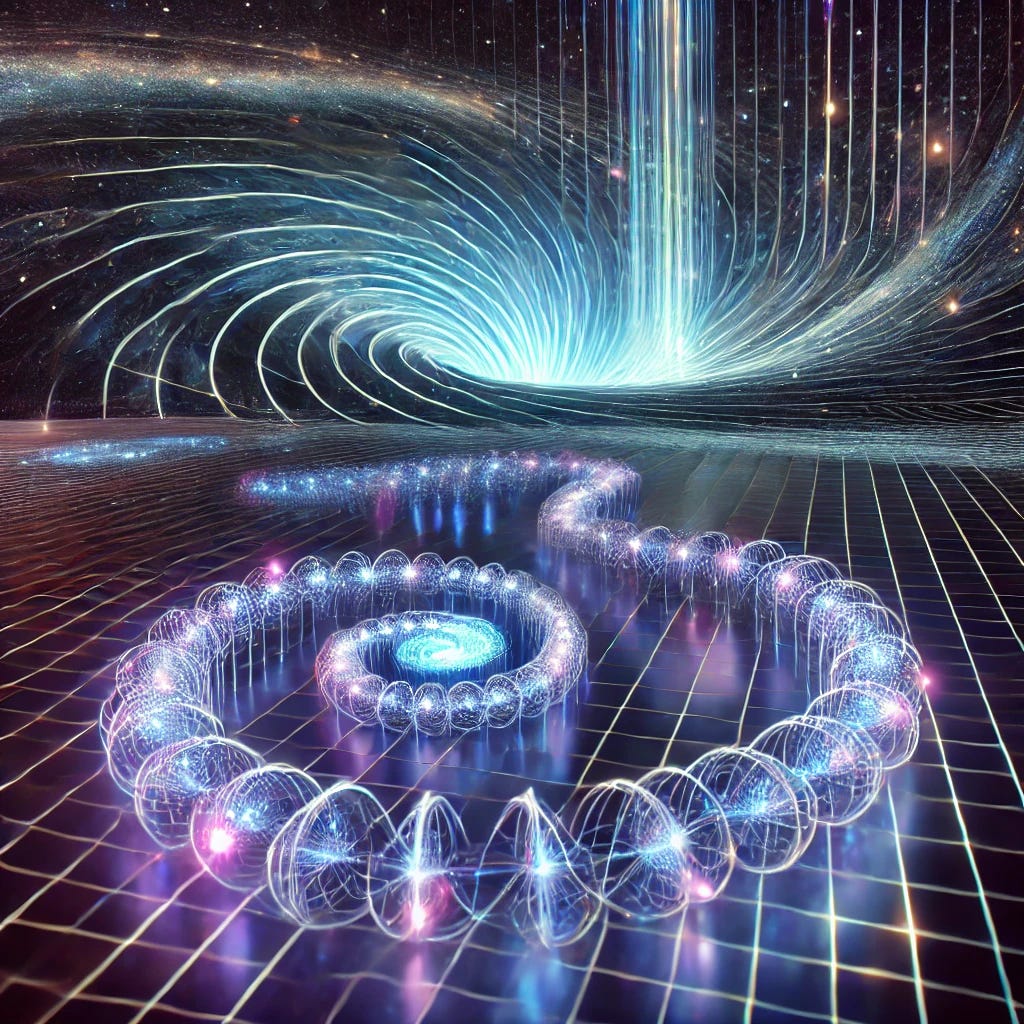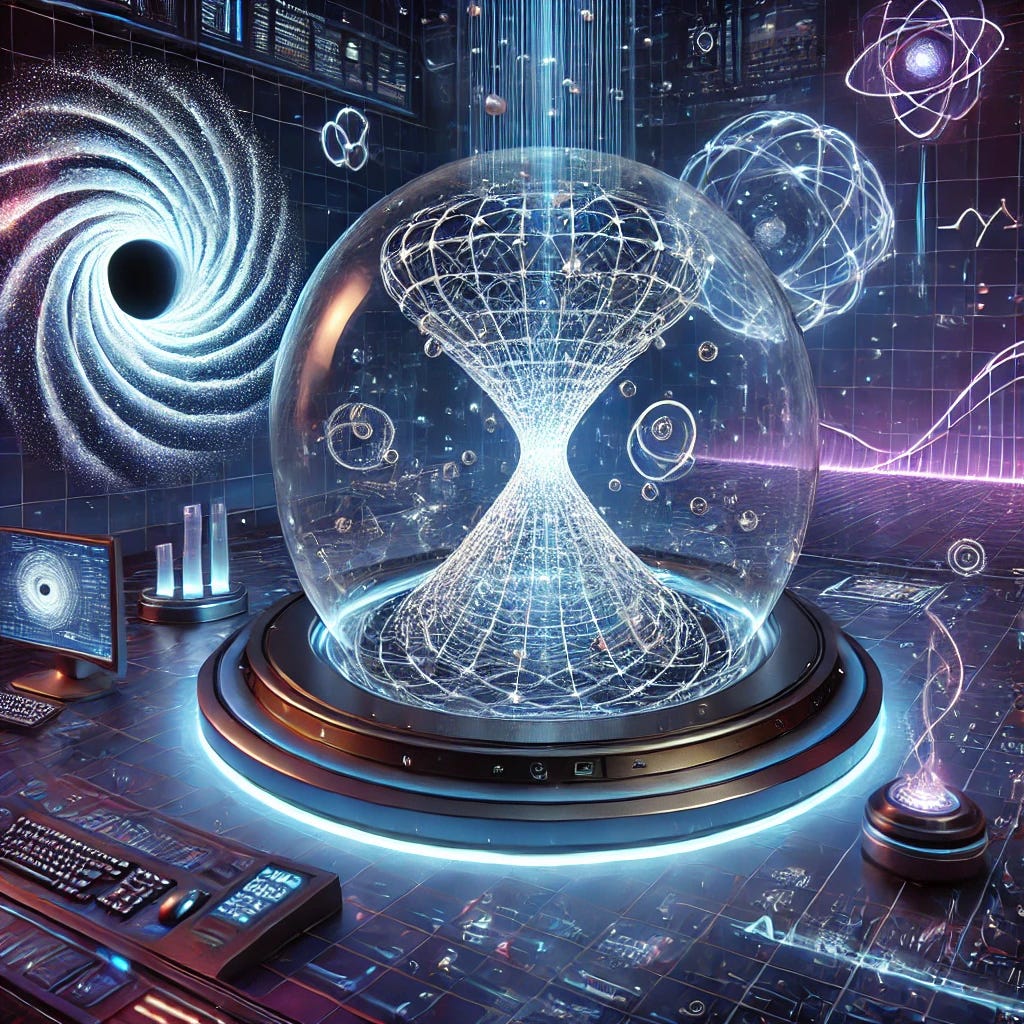Gravitational Hysteresis Loops
Could Quantum Systems Retain Memory of Curved Spacetime Interactions?
Abstract
The standard model of quantum mechanics treats gravity as negligible at microscopic scales. However, recent theoretical intersections between quantum information theory and gravitational physics suggest that quantum systems may be subtly sensitive to spacetime curvature. This article proposes the speculative concept of gravitational hysteresis loops: a non-classical memory effect wherein quantum systems retain phase-shifted information from past interactions with dynamic curvature. Rather than responding instantaneously to gravitational fields, such systems would exhibit looped responses akin to magnetic hysteresis, revealing a temporal echo of past spacetime topologies. We explore how this challenges assumptions of locality and reversibility, propose a thought experiment involving entangled particles in varying gravitational wells, and consider how AI systems could assist in modeling or detecting such effects.
1. Introduction: Revisiting Gravity at the Quantum Scale
In general relativity, spacetime curvature affects the trajectory of particles, including light. But in quantum mechanics, especially within flat-space approximations, gravity plays almost no direct role in the unitary evolution of systems. Nonetheless, attempts at quantum gravity have shown tantalizing signs that gravitational environments may encode subtle information into quantum states (Bose et al., 2017; Marletto & Vedral, 2017).
But what if these interactions aren’t limited to transient effects? This article introduces the idea that quantum systems could remember the curvature of spacetime they once occupied, not merely as decoherence or noise, but as persistent phase-space distortions that manifest later as non-linear, path-dependent behaviors. We call this phenomenon gravitational hysteresis.
2. Defining Gravitational Hysteresis
Hysteresis is typically associated with ferromagnetic materials, where a material’s magnetization depends not just on the current magnetic field but on the history of past fields. Transposing this idea into the quantum-gravitational context, gravitational hysteresis implies that a particle’s quantum state contains a looped memory of its spacetime trajectory.
In this framework, particles that traverse fluctuating gravitational environments, such as orbiting near a neutron star or passing through frame-dragging regions, would not merely accumulate geometric phases (à la the Berry phase), but would encode a non-commutative history of spacetime interactions. These would manifest later as altered interference patterns or anomalous entanglement behaviors.
The hypothesis builds on known results in gravitationally induced quantum phase shifts (Chiao & Speliotopoulos, 2004), but generalizes them into non-reversible informational loops, suggesting a breakdown of unitary symmetry under certain historical spacetime deformations.
3. A Thought Experiment Using Entangled Pairs
Imagine two entangled photons, A and B. Photon A travels through a flat spacetime region; photon B is routed near a rotating massive body, experiencing frame-dragging curvature. Upon recombination, traditional quantum mechanics predicts slight phase differences if gravitational redshift is accounted for. But under the gravitational hysteresis model, photon B’s quantum state is altered non-locally in time, such that even after passing through the curvature region, it retains an altered internal structure.
This would manifest as anomalous correlations when re-entangled with photon A, especially when subjected to measurement bases aligned along historical curvature gradients. These deviations would be distinguishable from standard decoherence or noise, and might show up as phase-space loops when tracked over time, mathematically represented as non-trivial holonomies over extended configuration spaces.
4. Implications for Quantum Causality and Measurement
Gravitational hysteresis, if real, would have deep implications for our understanding of time, causality, and quantum measurement. Standard interpretations rely on Markovian assumptions, future states depend only on the current state, not the past. But hysteresis introduces non-Markovian curvature memory, meaning that spacetime histories imprint themselves on quantum systems in persistent, recoverable ways.
This may explain anomalies in long-baseline entanglement experiments or provide a hidden variable-like mechanism grounded not in hidden particles, but in unreconciled histories of curvature interaction. It could also imply that quantum systems entangled across different gravitational environments may not be strictly comparable, challenging assumptions in proposed space-based quantum communication schemes.
5. Speculative Extensions into AI-Based Detection Systems
Detecting such hysteresis effects would require pattern recognition over extended histories of quantum behavior under varying gravitational contexts, a task well-suited for advanced AI systems. Neural networks could be trained to detect deviations from standard phase evolution, learning signatures of historical curvature imprints across many repetitions of interferometric experiments.
An AI system could recursively compare outputs from similar quantum experiments run at different gravitational potentials, such as at sea level and at high altitude, to identify residual hysteretic phase effects. Reinforcement learning agents could even propose optimal orbital paths to amplify hysteresis, acting as experimental designers in low-Earth orbit laboratories.
Furthermore, AI-augmented quantum simulators could model hypothetical gravitational hysteresis loops in synthetic curved-spacetime environments, allowing for hypothesis testing without immediate physical implementation. This would extend the AI’s role from prediction to theoretical physics innovation, helping design novel experiments that challenge our assumptions of time, memory, and curvature in quantum systems.
6. Toward a New Quantum-Geometric Information Theory
If gravitational hysteresis loops exist, they suggest the possibility of a new kind of quantum memory, neither quantum decoherence nor classical information, but geometric in origin. This could form the foundation for a quantum-geometric information theory, where information is not simply encoded in states or entanglements, but in the shape of spacetime histories themselves.
Such a theory might explain why certain quantum systems resist decoherence in high-curvature regions, or why some entanglements are more stable in orbit than on Earth. It may even offer new approaches to quantum gravity: rather than unifying spacetime and quantum fields at a fundamental level, we could begin by treating curvature as an information-bearing entity, one that remembers, loops, and distorts causality through hysteresis.
References
Bose, S., Mazumdar, A., Morley, G. W., Ulbricht, H., Toroš, M., Paternostro, M., ... & Kim, M. S. (2017). Spin Entanglement Witness for Quantum Gravity. Physical Review Letters, 119(24), 240401.
Marletto, C., & Vedral, V. (2017). Gravitationally Induced Entanglement between Two Massive Particles is Sufficient Evidence of Quantum Effects in Gravity. Physical Review Letters, 119(24), 240402.
Chiao, R. Y., & Speliotopoulos, A. D. (2004). Towards Migo: Matter-wave Interferometric Gravitational-wave Observatory. Journal of Modern Optics, 51(6–7), 861–899.







Question Regarding Path Dependency in Gravitational Hysteresis
Dear Writer,
This was a fascinating and beautifully imaginative piece—thank you. I had a question regarding the role of path dependency in gravitational hysteresis.
If a quantum particle travels through a curved spacetime region and develops the kind of “memory” you describe, what happens if it later takes a different path—perhaps through flat spacetime, or a region with different curvature? Does this new trajectory overwrite the original imprint, or do the memories of distinct gravitational encounters accumulate in some layered or interfering way?
More specifically, could previous and current spacetime trajectories interact—constructively or destructively—in how the system expresses hysteresis? Might we model this as path-integrated holonomies, or something more akin to phase-space braiding over nontrivial topologies?
Also, I’m curious—when proposing gravitational hysteresis loops, are you primarily aiming to bridge quantum mechanics and general relativity conceptually, or do you see this leading toward concrete experimental paths (e.g., AI-assisted detection, quantum memory systems, etc.)? In other words, what do you most hope this theory helps us uncover: a deeper physical law, a refinement of existing models, or a shift in how we interpret time, causality, and information?
Thanks again for sharing such a thought-provoking idea. I’d love to hear your perspective.
Chameleon